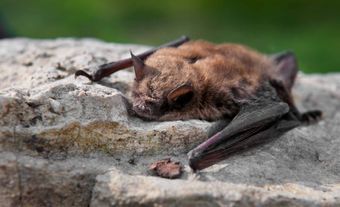
Hare is a term applied to midsized herbivores of the order Lagomorpha whose young are born fully haired, with eyes open, and able to run about a few minutes after birth. All North American hares belong to the genus Lepus; 3 species are native to Canada, one has been introduced.
Arctic Hare

The northernmost species, arctic hare (L. arcticus), found in the tundra zone beyond the treeline, is the largest Canadian species, with adults weighing 3.2-5.4 kg.
Snowshoe Hare

Snowshoe or varying hare (L. americanus) are widespread throughout Canadian forested areas and provide meat to humans in remote communities. Snowshoe hares exhibit enormous population fluctuations, peaking every 9-10 years. Numbers vary from approximately one hare per 50 ha to upwards of 200 per ha.
Other Species
The remaining native species, white-tailed jack rabbit (L. townsendii), largely nocturnal and solitary, is found throughout the prairies. In 1912 the European or Cape hare (L. europaeus) was introduced to Ontario as a game animal. Restricted to Ontario, it is sometimes a garden pest. Unlike native species, it does not turn white in winter.
Reproduction and Development
Young hares (leverets) are born in the open and are weaned after 2-3 weeks (5-6 in white-tailed jack rabbits). Gestation averages 36 days and, depending on the species, a litter contains 1-7 young, with up to 4 litters born over a summer. Female hares are usually larger than males; hares are larger than rabbits.

 Share on Facebook
Share on Facebook Share on X
Share on X Share by Email
Share by Email Share on Google Classroom
Share on Google Classroom





